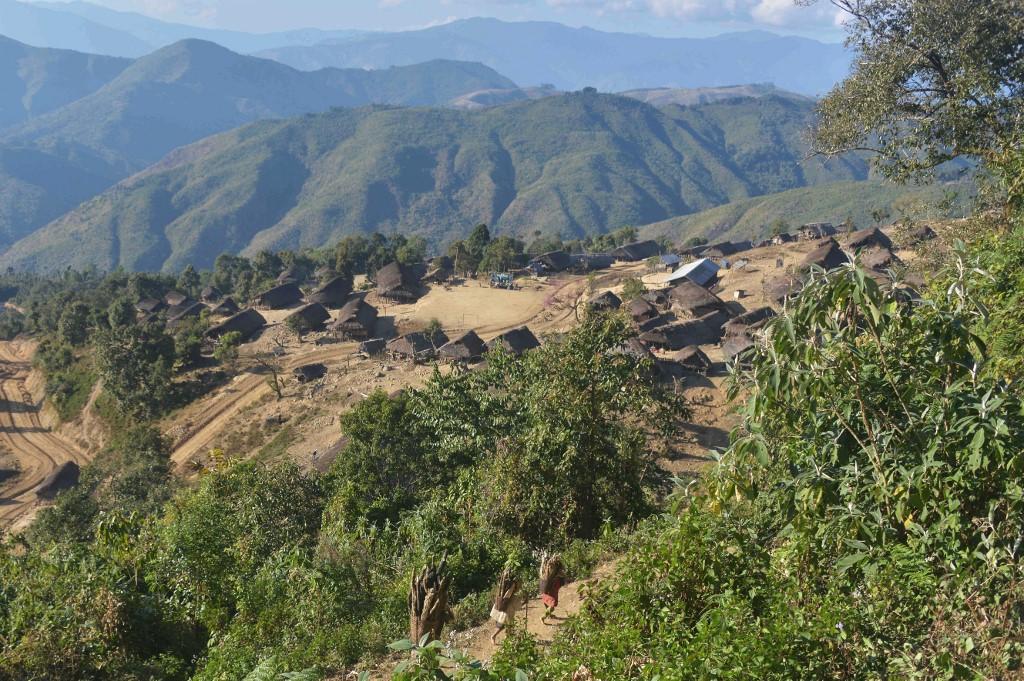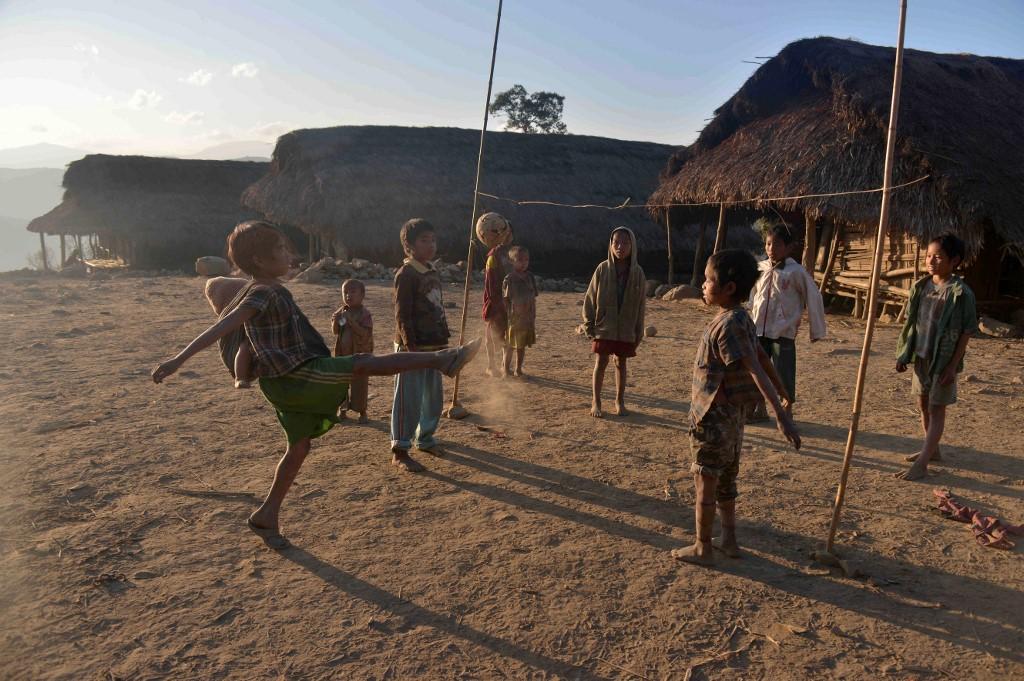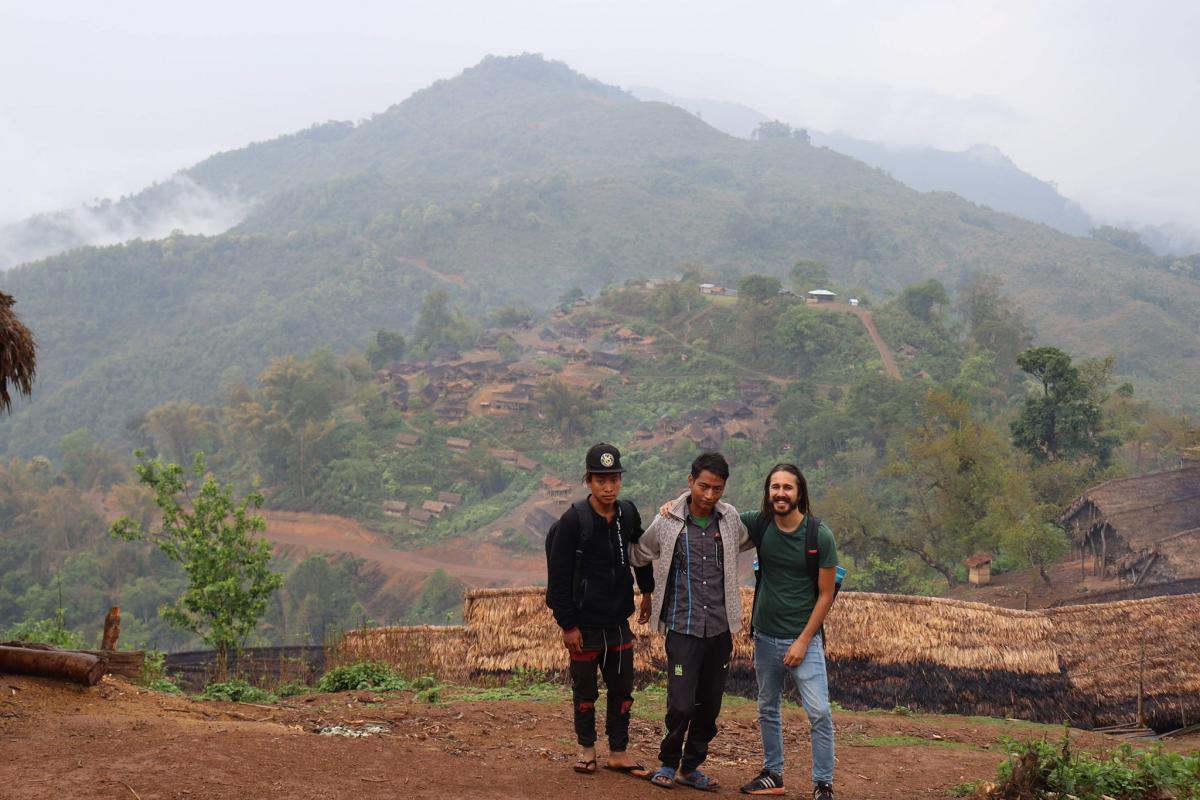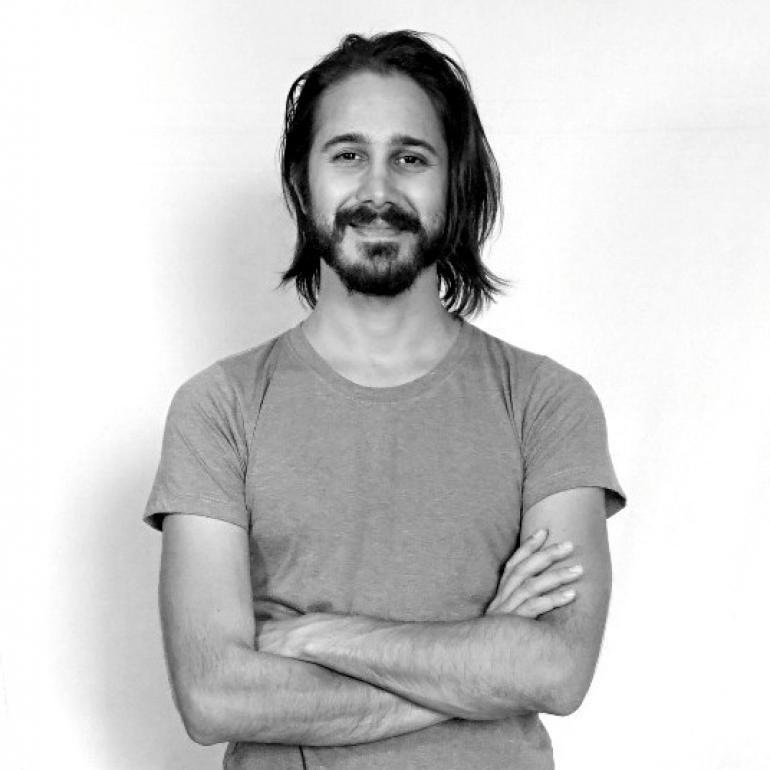
Set north of Sagaing near the Indian border, the Naga hills make for one of the most adventurous trips in Myanmar.
On the Myanmar side, there are 10 Naga tribes living in and around three townships that comprise the Naga Self-Administered Zone.
Though familiar with stunning images of the rolling landscape and aware of the region’s diversity of languages and garb, I could find little travel information on the administrative capital, Lahe, so my friend and I packed our bags and hoped it would work out.
We flew at noon from Mandalay airport to Hkamti (US$117 / one and a half hours each way)—choosing that over a two-day drive. Those with time can also opt for a riverboat along the Chindwin back to Monywa in Sagaing region.
Hkamti
Late afternoon and I quickly fell in love with Hkamti. From here on in, some basic Burmese at the bare minimum is necessary. Mine—shamefully—is just about that after nearly two years in the country.
The town is organized in a grid system of dusty neat lanes lined with old teak houses on raised platforms. Relatively middle-income, it has some new multi-storey riverside buildings that jarred with my romantic ‘Myanmar town of yore’ lens. Also tempering my imagination were the six students learning Photoshop in a computer school.
Where to eat?
Of the few teashops and restaurants, we chose Pyone Thazin for its salads, noodles, bean curd and other vegetarian dishes, though I suspect this establishment was the source of my only stomach issues of the trip. YKKO (not the chain) was also decent.
Onwards to Lahe
With help from our guesthouse, Myan Nan Taw (twin room, 30,000 kyats), we organised motorbikes with drivers (40,000 kyats each) for the four hour ride—a wise precaution for those unfamiliar with the precarious roads. Not driving allowed us to appreciate the stunning vistas as well as the smells (mainly petrol) and sounds (excessive revving). Lush mountains sloping into wooded valleys soon morphed into endless jungle that may well have hidden ancient civilisations. I imagined if something went wrong—perhaps a brake malfunction on a tight corner—and we flew over the edge, my final thought would be, “This is just lovely.”
Lahe
Though remote, Lahe has plenty of shops, restaurants and a guesthouse, so there’s no need to stock up before visiting. Our drivers took us to the friendly immigration office for registration before we entered Shwe Taung Tan guesthouse (10,000 kyats per night) in the town centre, the only permitted guesthouse for foreigners.
The owner is something of a significant figure in the area, and one of his daughters, Yaung Yaung, helped us organise everything. Unlike most of Myanmar, the local reception was wary. Children ran from us, adults stared, and very few smiled (to be fair, we were two bearded men). They are not used to seeing foreigners, and historically, when foreigners have come it’s usually with weapons and demands. The British, Japanese, and Burmese have all invaded, and none have brought much good for the natives.
The odd cold shoulder, then, is completely understandable, although I did feel unwelcome at times. Still, the onus is on travellers to make a good impression and prove that having tourists can be positive. And once we were invited into a few huts, I was happy to see people open up.
Things to do
After the bumpy journey, a chill out at the guesthouse was in order. The local attractions are a zedi overlooking a long valley and a poorly maintained, possibly replica Naga long house; both sights can be tied together on one pleasant walk.
Surrounding villages
The guesthouse arranged a motorbike and driver (50,000 kyats each) to take us north, where we arrived at our first Naga village, Ma Chan.
Rain clouds are never far away in the mountains, so on this grey, cool day we wandered around like the chickens and wee pigs, greeting the children who were playing games, and the older villagers, who sported faded tattoos on their chins and foreheads.
Each hut made do with a small solar panel, while looming over the village was a mobile phone tower, an island of modernity fenced off with barbed wire. This village also had a Naga longhouse, with its totem-like pillars displaying important symbols such as the hornbill and the twin rifles. On the left was the village drum, a long, hollowed-out tree trunk inside which lay the carved branches used to beat out announcements.
Our drivers took us into a house, where we got our first smiles from the resident family as we sat around their fire, chatting and waiting for the rains to pass. Watching over us were bunches of monkey skulls; the Naga famously used to practice headhunting.
Santon
With a blanket of grey wrapping around its large thatched huts, Santon was stunning to behold as it emerged from beyond the bends.
The village, which climbed up steep hills and hugged the summit, was eerily quiet when we arrived. A church stood out from the huts—religious affiliation varies from village to village, and I guess the missionaries got here first. A group of men re-thatching a house were forced to shelter from the rain and two joined us around a small fire. They offered us tea and we waited for the weather to clear before returning to Lahe on a newly mudded and so more perilous road.
That evening we sipped beers at our guesthouse. Across the street, chants echoed from a Buddhist nunnery and young men roared their motorbikes. Then four men added their yammering to the clamour; sounds mixed and competed, ebbed and flowed.
Hiking and overnight stays
Over the motorbikes and on with the hiking, our guesthouse saviour made some calls and pointed on a map where our guide would meet us. Her father drove us outside Lahe and we began the trek down a dirt road, passing banana groves and bamboo islands.
Chilly at the top, sweaty at the bottom, the three-hour hike was made easier by views of glorious valleys and far-off, untouchable villages. As the mist swept in, our guide fashioned us a bamboo walking cane and a bamboo leaf umbrella that was then upgraded to a palm leaf model.
Not much wildlife, but plenty of the peace and silence that I had been craving in Yangon. At one viewpoint we took in a vista of the surrounding mountains, beautiful to behold, as long as we didn’t look down at the rubbish strewn around the bench.
Our host village was wonderfully welcoming and put on a feast of pumpkin and eggs as well as two beef dishes, served with rice and green tea. Women eating with their children found great amusement at their visitors, chickens raced above and beneath, babies cried and puppies were kicked out of the way.
Simple and bare, our home for the night, a bamboo hut, had a fire burning in the hearth and a reed mat bed. New friends brought us light rice wine, and as we napped people came and went. It was relaxing to doze while voices spoke softly and intermittently, unconcerned at disturbing us: truly, they weren’t.
We were treated to a dance performance from the children and young women who wore traditional black dress, followed by two men whose sword dance was slow and measured.
A Shan man who had left Monywa told us he had chosen to live in this village because life here was about community and not money.
“If someone is hungry, they are fed,” he said. “If they need a house, we build them one.”
I offered the same reason for moving from London to Myanmar. As ever, there is so much more that unites humans than separates us. Before bed, I prayed to the leech god to spare me, but instead, I was sent a finger-sized creature that gorged upon my love handles before slipping off into the night.
We woke up slowly, washed at the communal pump and enjoyed a delicious breakfast. An accomplished hunter displayed his collection of goat, boar, bear and monkey skulls, and then we tidied up and said our goodbyes.
This was the start of an arduous journey back home: a hike to the main road, a car to Lahe, a car to Hkamti, a motorbike to the airport and then a plane to Mandalay. Night bus to Yangon and finally a taxi to Sanchaung township.
Of all the Myanmar places I have seen, Nagaland is my favourite. A little wiser for my next visit, I hope to learn more about the numerous Naga tribes.
The trip requires time and patience (check for any conflict flare up before you go), but your efforts will be rewarded with inimitable landscapes and wonderful people. I cannot recommend it enough.
What to take
- Photocopies of passport and visa.
- SIM card (MPT seemed to work better than Telenor).
- Insect repellent (for the flies more than the mosquitoes.
- Gifts for the villages—especially the schools.
- Money. A KBZ ATM is scheduled to open soon in Hkamti, but take all the cash you need plus an emergency wad.
- Download everything you need before going (e.g. offline maps) because of poor signal.




